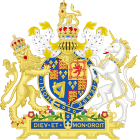
The English Civil War refers to a series of civil wars and political machinations between Royalists and Parliamentarians in the Kingdom of England from 1642 to 1651. Part of the wider 1639 to 1653 Wars of the Three Kingdoms, the struggle consisted of the First English Civil War, the Second English Civil War and the Third English Civil War. The latter is also known as the Anglo-Scottish war, since most of the fighting took place in Scotland.

The Long Parliament was an English Parliament which lasted from 1640 until 1660. It followed the fiasco of the Short Parliament, which had convened for only three weeks during the spring of 1640 after an 11-year parliamentary absence. In September 1640, King Charles I issued writs summoning a parliament to convene on 3 November 1640. He intended it to pass financial bills, a step made necessary by the costs of the Bishops' Wars in Scotland. The Long Parliament received its name from the fact that, by Act of Parliament, it stipulated it could be dissolved only with agreement of the members; and those members did not agree to its dissolution until 16 March 1660, after the English Civil War and near the close of the Interregnum.
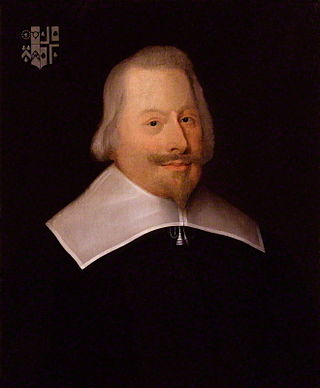
John Pym, 20 May 1584 to 8 December 1643, was a politician and administrator from London, who played a major role in establishing what became the modern English Parliamentary system. One of the Five Members whose attempted arrest in January 1642 was a major step in sparking the First English Civil War, his use of procedure to out manoeuvre opponents was unusual for the period. Although this meant he was respected by contemporaries rather than admired, in 1895 historian Goldwin Smith described him as "the greatest member of Parliament that ever lived".

Sir Henry Vane, often referred to as Harry Vane and Henry Vane the Younger to distinguish him from his father, Henry Vane the Elder, was an English politician, statesman, and colonial governor. He was briefly present in North America, serving one term as the governor of the Massachusetts Bay Colony, and supported the creation of Roger Williams' Rhode Island Colony and Harvard College. A proponent of religious tolerance, as governor, he defended Anne Hutchinson and her right to teach religious topics in her home which put him in direct conflict with the Puritan leaders in the Massachusetts Colony. He returned to England after losing re-election and eventually, Hutchinson was banned from the colony.

Denzil Holles, 1st Baron Holles, was an English statesman, best remembered as one of the Five Members whose attempted arrest by Charles I in January 1642 sparked the First English Civil War.
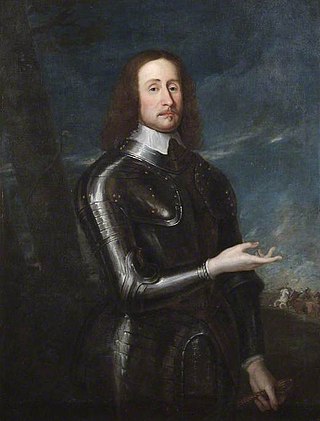
John Hampden was an English landowner and politician whose opposition to arbitrary taxes imposed by Charles I made him a national figure. An ally of Parliamentarian leader John Pym, and cousin to Oliver Cromwell, he was one of the Five Members whose attempted arrest in January 1642 sparked the First English Civil War. All five are commemorated at the State Opening of Parliament each year.
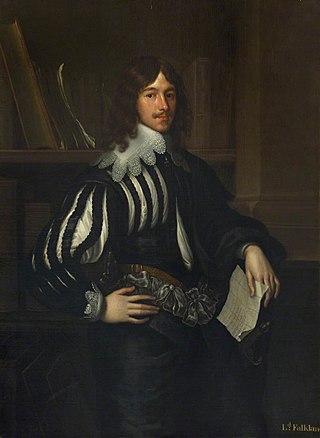
Lucius Cary, 2nd Viscount Falkland PC was an English author and politician who sat in the House of Commons from 1640 to 1642. He fought on the Royalist side in the English Civil War and was killed in action at the First Battle of Newbury.

Nathaniel Fiennes, c. 1608 to 16 December 1669, was a younger son of the Puritan nobleman and politician, William Fiennes, 1st Viscount Saye and Sele. He sat in the House of Commons at various times between 1640 and 1659, and served with the Parliamentarian army in the First English Civil War. In 1643, he was dismissed from the army for alleged incompetence after surrendering Bristol and sentenced to death before being pardoned. Exonerated in 1645, he actively supported Oliver Cromwell during The Protectorate, being Lord Keeper of the Great Seal from 1655 to 1659.

The First English Civil War took place in England and Wales from 1642 to 1646. It is part of the 1639 to 1653 Wars of the Three Kingdoms, which also include the Bishops' Wars, the Irish Confederate Wars, the Second English Civil War, the Anglo-Scottish war (1650–1652) and the Cromwellian conquest of Ireland. Historians calculate some 15% to 20% of all adult males in England and Wales served in the military between 1639 and 1653, while around 4% of the total population died from war-related cause, versus 2.23% in World War I. These figures illustrate the impact of the conflict on society in general, and the bitterness it engendered.

Robert Greville, 2nd Baron Brooke was a radical Puritan activist and leading member of the opposition to Charles I of England prior to the outbreak of the First English Civil War in August 1642. Appointed Parliamentarian commander in Staffordshire and Warwickshire, he was killed by a Royalist sniper at Lichfield on 2 March 1643.

The Clergy Act 1640, also known as the Bishops Exclusion Act, or the Clerical Disabilities Act, was an Act of Parliament, effective 13 February 1642.
Sir James Dillon, 3rd Earl of Roscommon was an Irish magnate and politician. He was born a Catholic but converted at a young age to the Church of Ireland. He supported Strafford during his term as governor of Ireland. In the Confederate Wars and the Cromwellian conquest he was a royalist. He died in 1649, but was nevertheless included as the fifth on the list of people that were excluded from pardon in Cromwell's 1652 Act of Settlement.
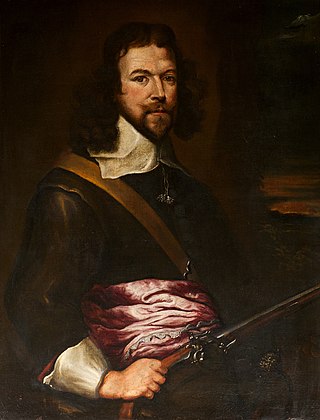
Sir Edward Dering, 1st Baronet (1598–1644) of Surrenden Dering, Pluckley, Kent, was an English antiquary and politician.
Cornelius Burges or Burgess, DD, was an English minister. He was active in religious controversy prior to and around the time of the Commonwealth of England and The Protectorate, following the English Civil War. In the years from 1640 he was a particularly influential preacher.
Henry Parker (1604–1652) was an English barrister and political writer in the Parliamentarian cause.

Henry Scobell was an English Parliamentary official, and editor of official publications. He was clerk to the Long Parliament, and wrote on parliamentary procedure and precedents.
John Milton's antiprelatical tracts are a series of five political pamphlets that attack the episcopal form of church leadership.

John Warner was an English churchman, Bishop of Rochester and royalist.

Under Charles I, the Puritans became a political force as well as a religious tendency in the country. Opponents of the royal prerogative became allies of Puritan reformers, who saw the Church of England moving in a direction opposite to what they wanted, and objected to increased Catholic influence both at Court and within the Church.
Charles Price was a Welsh soldier and politician who sat in the House of Commons variously between 1621 and 1642. He fought on the Royalist side in the English Civil War and is believed to have been killed in a duel.
